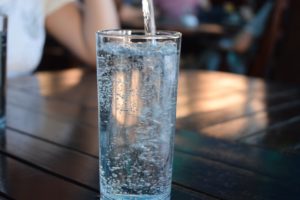
An investigation that was published in 2018 was carried out to determine the extent to which drinking water is contaminated with microplastics. The investigators looked for plastic particles, in plastic or glass bottles sold over the counter, that are so small that only the largest of the particles are barely visible to the naked eye. Alarmingly, the water, which was sold in 19 different countries (including India, Germany, China and the USA), was found to contain microplastic contaminations. The samples included well-known brands from various manufacturers (Minalda, Gerolsteiner, Wahaha, Aquafina).
Of the 259 water bottles examined, 93% of the water showed contamination with microplastics of varying degrees. On average, they found about 10 visible particles (>100 µm in diameter) per liter, and a whopping 325 particles per liter that were too small for the naked eye. About half of the contamination could be traced to the plastic cap. But also the water in glass bottles contained microplastics, suggesting that this relatively new human-produced contaminant pervades our environment. Are we poisoning ourselves (not to mention future generations)?
The original publication can be found here:
https://internal-journal.frontiersin.org/articles/10.3389/fchem.2018.00407/full
The German-Austrian joint project “MicroplasticATfood” started on July 1st, 2021. Among other things, the project aims to investigate the extent to which packaging, bottling and canning factories contribute to the microplastic concentration in our drinks and food. The goal is to determine the extent of microplastic contamination in our food, as well as identifying possible sources of contamination.

The extremely high resistance to degradation of microplastics means that the concentration of microplastic contamination in our environment is set to increase. Every year, about 400 million tons of plastic is produced. Natural processes like sunlight, water, and mechanical wear and tear generate more microplastics at an alarming rate, with contamination levels predicted to be 3 times higher within the next 10 years. The impact of microplastics on human health and biodiversity is mostly unknown, but early studies indicate that the signs are bad. A solution is desperately needed.
